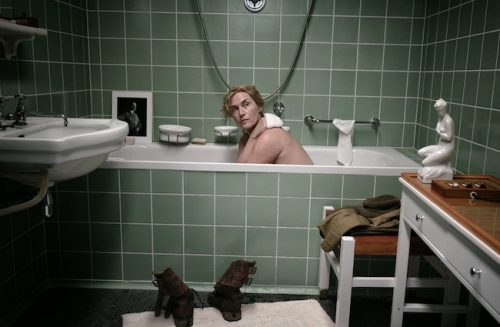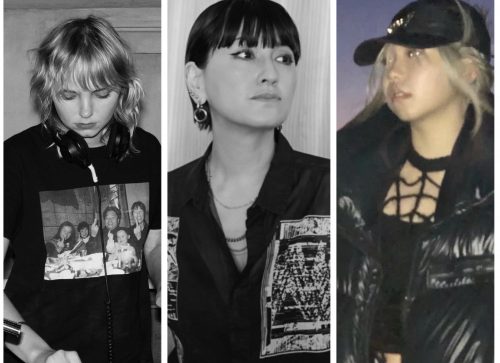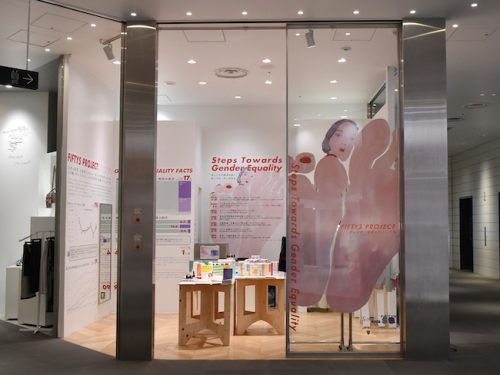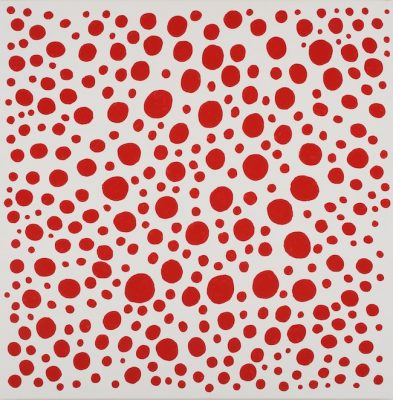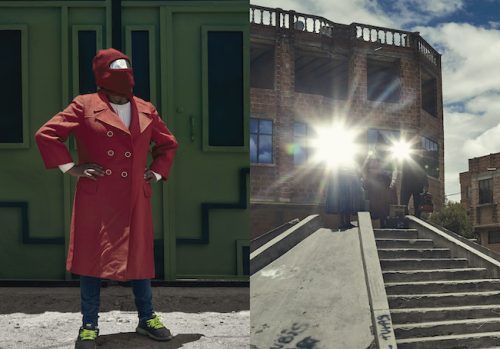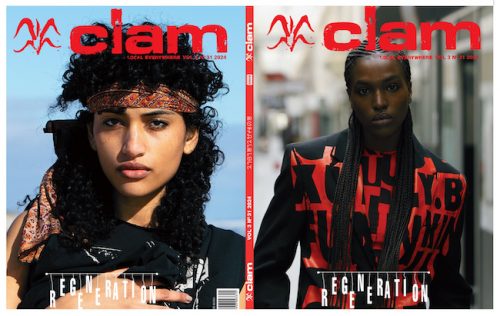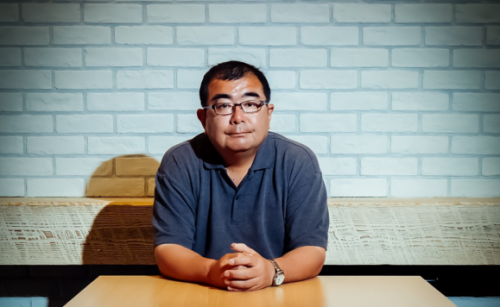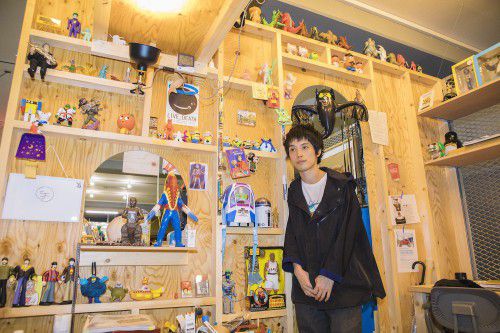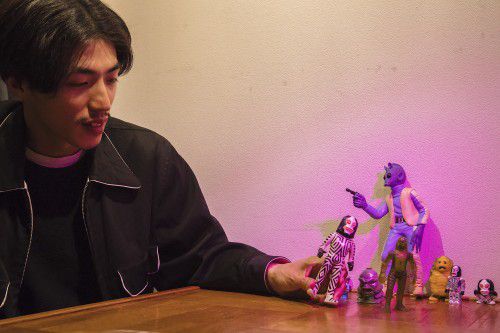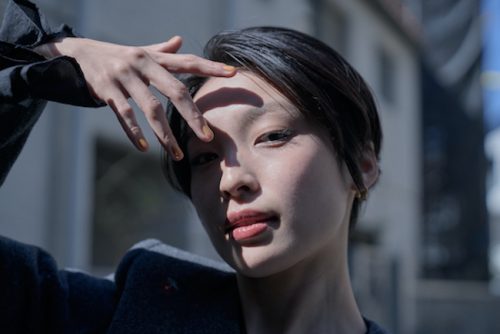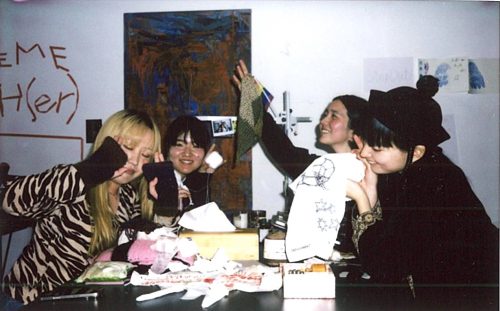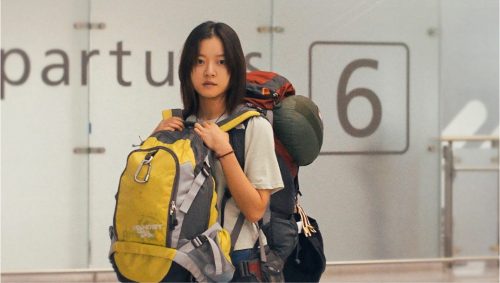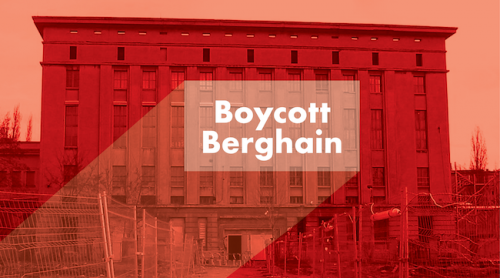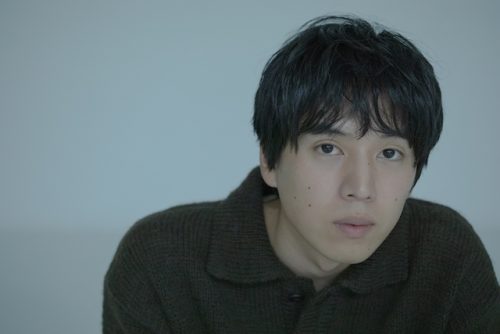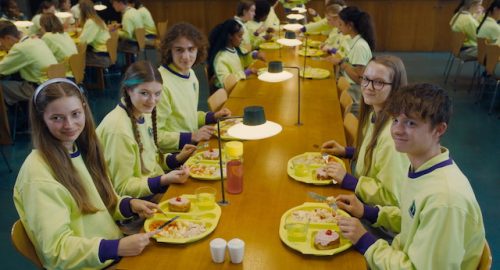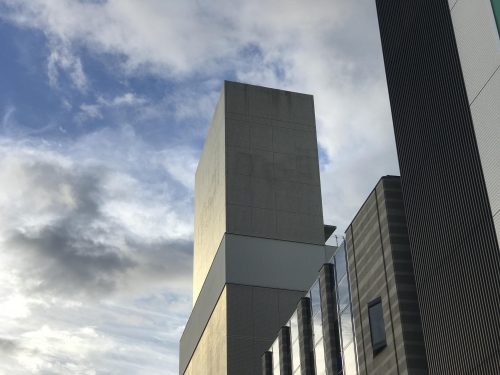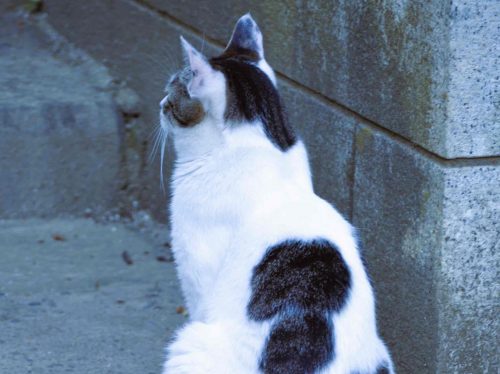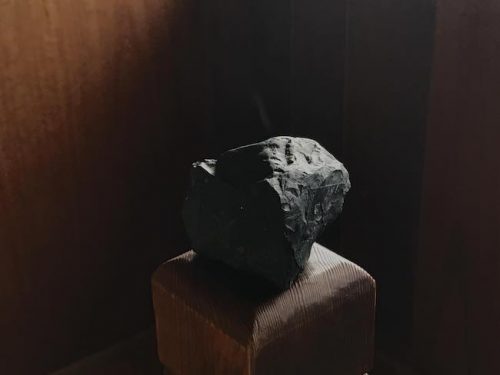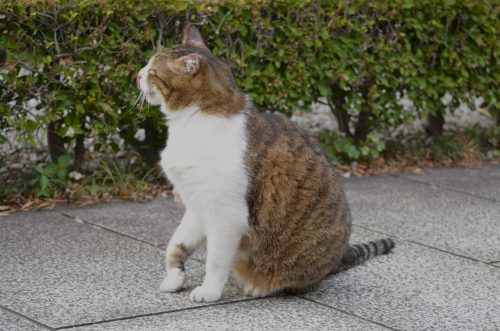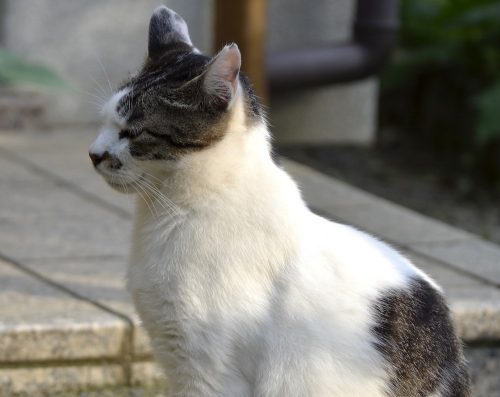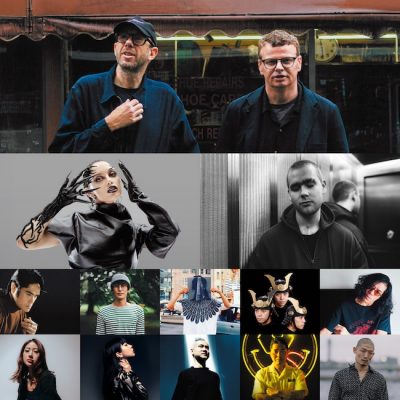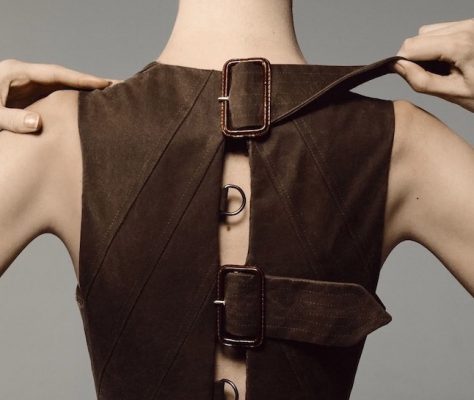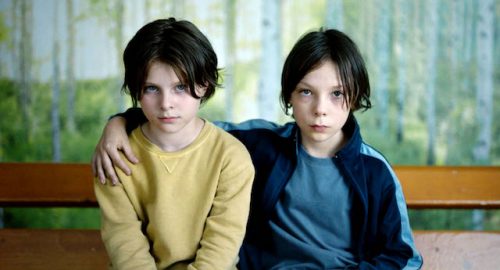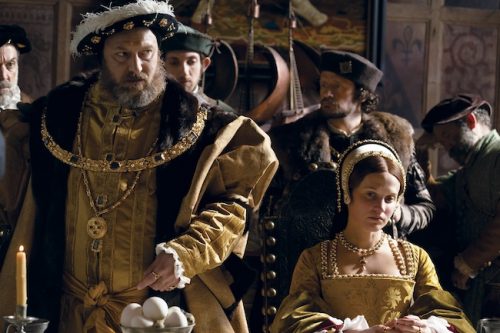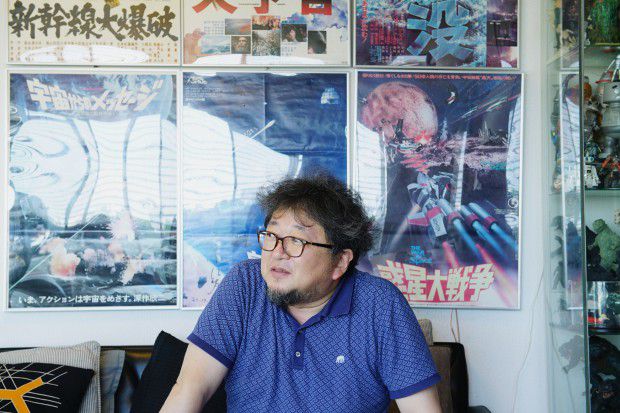
平成ガメラシリーズで特技監督を務めた樋口真嗣監督が、2016年庵野秀明監督とともに製作した『シン・ゴジラ』は「これまでのシリーズ作とは一線を画す全く新しいゴジラ」として、旧来の怪獣ファンのみならず初めて怪獣映画に触れた人々からも熱狂の声が上がった。新しいゴジラが誕生した背景と、現役監督として考える表現のこれからの可能性について、自身の怪獣人生の道のりを紐解きながら語ってもらった。
Godzilla Resurgence, produced in 2016 by director Shinji Higuchi, special effects supervisor of the Gamera Trilogy, and director Hideaki Anno, created excitement not only among monster fans, but those who had never seen monster films before as a “new Godzilla, completely different from the series so far.” As he disclosed to us his journey through his ‘monster life’, he spoke to us about the background of the birth of the new Godzilla, and the future possibilities for expression as told by a director today.
——樋口監督は幼い頃から怪獣がお好きだったのですか?
—Have you liked kajyu monsters since you were young?
樋口「僕は1965年生まれですが、その時代の子供は全員が怪獣を好きでした。現在は趣味が多様化していて、めいめい色々なものを好きになって良い時代ですよね。だから、余程のことがない限り、みんなが一つのコンテンツに集中しません。でも、その頃は子供に与えるものはこれだとある程度定まっていたのです。しかも今のように動画配信やDVDレンタルで好きなものを好きな時間に観られるということもなかった。ゴールデンタイムはテレビで子供からの視聴率が見込めるような怪獣が登場する番組が毎日放送されていて、次の日の学校は番組の話でもちきりで、休み時間は怪獣ごっこをしてね。親はテレビの見過ぎはバカになるって目くじら立ててて。なので、色々ある選択肢の中で怪獣を選びましたというのではなく、全員同じものを観ていた時代なんです。
それでも大きくなっていくにつれ、周りの友達は子供向けのファンタジーから目覚めて部活や音楽活動などの実存に生きていくようになるのですが、僕はそこで何か他のことをするということを見つけ損ねて、ずっと怪獣が好きなままだった。それでこの前まで怪獣好きだった連中に、『まだそんなものを観ているのか』とバカにされ、その頃から鬱屈というか歪みが始まるわけです(笑)。さらに同じく内向的なタイプの奴らさえもアニメにいってしまったので、ひたすらみんなに裏切られた気持ちでいました」
Higuchi: “I was born in 1965, but kids during that time all liked monsters.Now, hobbies have become diverse and we live in a generation where you can like all kinds of things. Hence, it seems like there aren’t many cases in which a single thing grabs everyone’s attentions, but back then, it was somewhat given that certain things would be handed to children. Moreover, we could not stream videos nor rent DVDs on whatever we liked, whenever we liked like we can today. The golden times were when they would broadcast shows with monsters that would receive a lot of views from children every day, and school the next day would be filled with conversations about the show, and we would play ‘monsters’ during recess. And mostly parents got angry about their kids being crazy about TV because they think it’s bad influence.Therefore, it was not like I chose monsters out of many choices, but simply that it was a time when everyone watched the same thing.
As I got older, my friends around me started to awaken from fantasy and live in the real world by joining clubs or playing music, but I missed the chance to find something other than monsters, and stayed liking monsters. People who liked monsters until just recently started to mock me, scoffing, “you’re still watching that?” and around that time, the depression and distortion began. Even the other introverts went to anime, so I solemnly felt betrayed by everybody.”
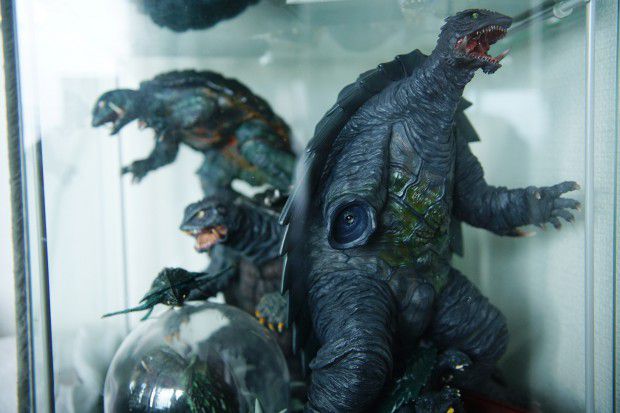
——それが何年くらいの話ですか?
—This was what year?
樋口「1970年代の後半に入ったあたりですね。その頃TVアニメの作品数が増えるかわりに、怪獣ものが減って、色んな理由はあるんですけど目に見えて質が落ちていって。より良いものを求めていくなかで再放送で観ていた昔の特撮に辿り着いて、日本の特撮や怪獣映画は凄いと確信を強めていきました。しかしそこに黒船襲来が起こるわけです。1978年というちょうど高校に入学した時に『スター・ウォーズ』が公開され、観てみたら『凄いじゃん』と思ってしまったんですよ(笑)。同時にメインストリームにいる、ファッションに興味を持ち出した人たちが『スター・ウォーズがすごい!』と言い出して、ファッション誌でもスター・ウォーズ特集が組まれて、西海岸のオシャレカルチャーとして紹介されていた。それもまた、『特撮をバカにして離れていったくせに!』と勝手に奪われたと勘違いして憤ってました(笑)」
Higuchi: “Around going into 1970. T.V. anime shows were increasing, while monster shows were decreasing – and the quality visibly got worse too for some reasons. As I searched for something better, I found myself watching re-runs of old special effects films, and slowly but surely realized Japan’s special effects films and monster films were extraordinary. However, something similar to the arrival of Perry occurred: in 1978, when I had just entered high school, Star Wars was released. I saw it and thought, “Wow”. Simultaneously, the mainstream kids who had just started to become interested in fashion started saying, “Star Wars is amazing!” and then Star Wars was featured in fashion magazines. It was introduced to Japan as Western, fashionable culture. Even then, I felt robbed of my hobby, thinking selfishly and getting angry like “I thought you guys made fun of special effects and abandoned me!”
——当時の日本の特撮映画とスター・ウォーズには、本来繋がってる点がありますよね。スター・ウォーズに大きな影響を与えた黒澤明監督は円谷英二監督や本多猪四郎監督とも親交があってお互いの作品について評価しあっていた背景もありますし。
—There are connections between the special effects films in Japan at the time, and Star Wars. Director Akira Kurosawa, who had a great influence on Star Wars had friendly relations with director Eiji Tsuburaya and director Honda Ishiro, and critiqued each other’s works.
樋口「そう、僕の中ではずっと繋がっていたんですよ。それなのに、一度怪獣を捨てた連中が『これはオシャレだからオッケー』と食いついたのがなんか悔しかったなぁ。いや、ちょっと待って! なんでこんなルサンチマンな話になっているんだろう(笑)。でも、それ以降スター・ウォーズのようなものがサブカルとして認められるようになって。そうすると、『日本にもこういうものがあったのでは?』と文化的な雑誌にウルトラマンなどが取り上げられるようになった。改めて価値付けがされ始めたんですね。それこそ、飯島敏宏監督(『ウルトラQ』『ウルトラマン』監督・脚本)のようなクリエイションへの姿勢はスター・ウォーズと変わらないんじゃないかという観点で認められ始めた。昔からそうやって芸術は評価され続けてきたわけで、同じようなことが当時起きたことにより、僕らが言語化できなかった日本の特撮の素晴らしさをメディアや評論家が言葉にして広めてくれたのです」
Higuchi: “Yes, there has always been a connection within me. And yet, I was disappointed that the people who had once betrayed monsters came back saying “This is fashionable so it’s okay”.Hold on, why am I telling you such sentimental stories? Haha. But, since then things like Star Wars were accepted as a subculture. Then, people started thinking, “Perhaps there was something like this in Japan” and Ultra Man began being featured in cultural magazines. It the start of a re-evaluation. Director Toshihiro Iijima’s (director and screenwriter of Ultra Q and Ultra Man) way of creating began to be accepted in the perspective that it was not much different from Star Wars. For ages, art had been evaluated this way, and since similar things happened at the same time, the media and critics put into words the splendor of Japanese special effects which we had been struggling to verbalize.”
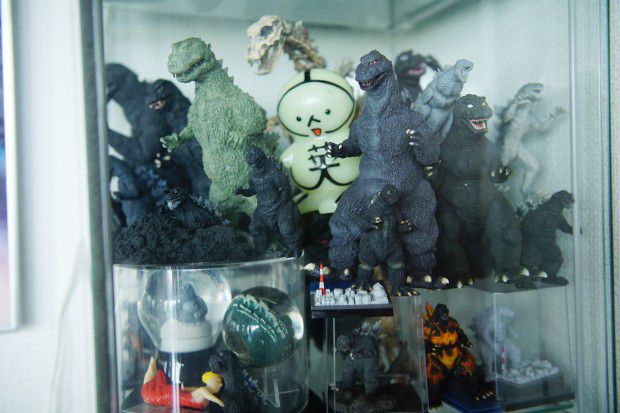
——ようやく自分が好きなものが認められたと。
—So, what you liked was finally accepted.
樋口「はい。しかしですね、今度は同じような趣味を持つ者同士で『日本映画が良い』派と『アメリカ映画が良い』派で派閥がわかれちゃったんです(笑)。その時代の日本映画って今じゃ考えられないぐらい地位が低くて、僕も『今どき日本映画を観てるなんて』と散々言われて悔しい思いをしたのですが、どれだけ馬鹿にされようとやはり日本映画は良いじゃないかという思いが拭えなかった。円谷英二監督や飯島敏宏監督といった方々が生んだ作品を観返すと、アメリカ映画にはない良さがあるんです。アメリカ映画のような派手さや豪華さはないかもしれないけれど、そこじゃない良さがあるなと思っていました」
Higuchi: “Yes. However, now those who shared my interests split up into two: those who think ‘Japanese films are better’ and ‘American films are better’.At the time,Japanese films were esteemed lighter than what you can imagine now. I had been told countless times, “No one watches Japanese films nowadays” and felt mortified, but no matter how much people mocked me, I could not wipe out my love for Japanese films. When I re-watch the works of director Eiji Tsuiburaya and director Toshihiro Iijima, there is a greatness to it that American films do not have. There may not be flashy or luxurious moments like American films, but I thought there was a different virtue to it.”
——その良さについて、もう少し詳しく聞かせてください。
—Could you tell us a little more about that virtue?
樋口「スター・ウォーズは素晴らしいし大好きですが、あれはアメリカン・ニューシネマの流れを受けて、リアリティを追求した結果ああいった作品になった。けれど、当時の日本映画は50年代60年代のクラシックなスタイルでありつつ、モダンで研ぎすまされていて洗練されていたんです。そこが当時の日本映画とアメリカ映画の違いですね。初代の『ゴジラ』や『ウルトラマン』を観ると、これがゼロからイチになる瞬間だなと思います。それまでなかったものがポコッと生まれる時というか。僕らの世代はその誕生の瞬間にリアルタイムで立ち会い、享受していたのです。結局僕らが今作っているものはその延長線上にあるものだから、何もないところから表現を創り出した先輩たちは本当に凄いです」
Higuchi: “Star Wars is amazing, and I love it, but from the influences of American New Cinema, it was created into such a film as a result of pursuing reality. However, while Japanese films during that time had a classic style from the 50s and 60s, it was modern,sharpened and sophisticated. That was the difference between Japanese films and American films at the time. When watching the original Godzilla and Ultra Man, I think it’s the moment this goes from 0 to 100. Like something that hadn’t existed is born out of nowhere. My generation witnessed and enjoyed this first-hand. Ultimately, what we make today is an extension of that, so I truly look up to those before me, who created expressions from scratch.”
——その怪獣映画好きの少年が制作に携わるようになるきっかけは?
—How did the boy who liked monsters come to produce?
樋口「当時『スターログ』という月刊SF映画雑誌があり、そこに日本のSF作家陣が集まって日本独自のSF映画を作ろうじゃないかという企画が起こっているらしいって記事を見つけまして。名だたる作家陣が掲載している物語を映画化するにあたって、特撮も若い人を起用すると。その記事を見て心がざわついたんですよね。当時高校生だったんですけど、『スター・ウォーズが好きな人も納得するような日本映画ができるはずだ』という思いが頭の片隅にずっとあって、それを今まさにやろうとしている人たちがいる。もういても立ってもいられなくなっちゃって、制作現場に行っちゃったんです。『革命が起こる!』と思ってね。それが、『さよならジュピター』(1984年作品)でした。当時まだ高校生でしたから手に職があるわけでもないけれど、なんとか潜り込んで『手伝います!』と。そこで手伝わせてくれるような大らかな時代だったんですよね。できあがった『さよならジュピター』を当時の彼女と一緒に観に行ったんですが……そこにあるDVDのブックレットにも当時のことが書いてありますよ(笑)」
Higuchi: “At the time there was a monthly SF film magazine called Starlog, and I found the article from there that Japanese SF writers got together and planned to create Japan’s own SF film. They decided to use a young people as staff of visual effects to create a film adaptation of a story posted by these famous writers. I read that article and my heart started racing. “There should be a Japanese film that even the people who like Star Wars will come to understand” was a thought always in the back of my mind, and now people were trying to do exactly so. I could wait no longer, so I went to the production site. I thought, “There will be a revolution!” The work was Sayonara Jupiter (1984). I was still a high schooler so it was not like I had work experience, but I managed to slide in and say, “I’ll help!” It was a magnanimous generation where they accepted my willingness to volunteer. I went to go see the completed Sayonara Jupiter with my girlfriend at the time but… you can read the DVD booklet there and it will tell you what happened, haha.”
——読んでいいですか?……『その日が彼女と過ごした最後の一日だった』。ああーっ!
—Can I read it? …”That was the last say I spent with her” Oh!!
樋口「(笑)。もうまさに『さよならジュピター』ですよ! 彼女との約束をすっぽかして手伝っていたので、彼女としては観終わって『こんなのに夢中になっていたわけ?』と思ってしまったのですね。なによりも作品が本当にひどかったんですよ。だから僕自身も『なんだこれ! こんなんじゃ誰も喜ばないし、革命じゃないよ!』と裏切られた気持ちになってしまって。生意気にも当時若手で大抜擢された特撮監督に『なんですか、あれ?』と言って『お前に何がわかる!』って思いっきり殴られまして(笑)」
Higuchi: “Haha. It was really, a Sayonara Jupiter! I would forget about my plans with her and go help with the film, so when she finished watching she thought, “you were into this?” Most of all the film turned out horrible. So even I thought, “What is this! This won’t make anybody happy, nor start a revolution!” I felt betrayed. As conceited as it sounds, I told the director of visual effects who was hired in spite of his young age, “What was that?” and he got mad at me saying, “What do you know!” and hit me,haha.”
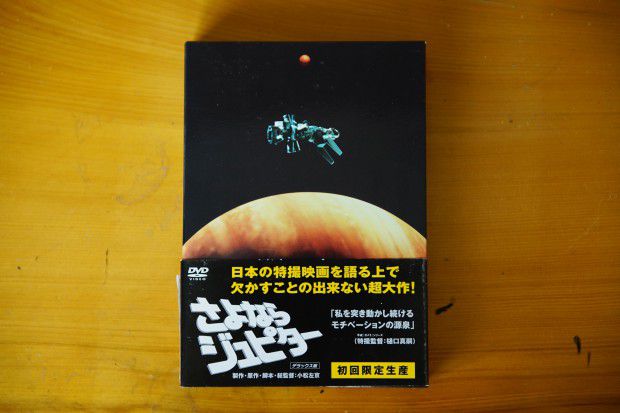
——それにしてもすごい入り込み方ですね。そこから、高校卒業後に『ゴジラ』(1984年)で特殊造形助手を務められるわけですが。
—Even so, what a way to enter the production scene. From there, after graduating high school, you worked on Godzilla (1989) as a special effects makeup assistant?
樋口「通常その流れでは映画業界に入れないのですが、僕の場合はなんとなく現場に入り浸っていたんです。特殊造形助手といえば響きは良いですが、実質パシリのようなもので、お遣いを頼まれたりするだけでした。『特撮映画の製作裏話が聞けて嬉しいな』くらいの気持ちだったから、仕事にしたいなんて全く思っていなかった。”一人前になるため””技術を積むため”といった前向きな気持ちでやっていたのではないんです。でも映画をたくさん観ているせいで調子に乗りはじめて、全然根拠がないのに『俺の方が面白い映画を作れる』なんて思うようになって(笑)。現場を見ただけで作れると勘違いしてしまう、そういうダメなマニアの典型でした。
その時期は特殊効果の部署で手伝っていたのですが、火なども使うことから保険に加入できるバイトにしようという話になって、正式に仕事として関わるようになったんですよね。ところがその部署に使える新人が入ったことから、頭でっかちで生意気で口ばっかりの俺は用無しになってしまいまして。技術もないし、仕方ないから『先生のところに行って学んでこい』と言われて。その先生というのが、初代ゴジラからずっと参加している井上泰幸さんという特撮の美術監督で、井上さんの仕事場のプレハブ小屋で丁稚奉公のようなことをやっていました。毎日鉛筆を削ったり図面のコピーをとったりしていたのですが、ある日セット模型のミニチュアを作っていて、ゴジラの模型が板で立体ではなかったので、わかりやすいように消しゴムを削って粘土を付けて作りなおしてみたら『そんなことができるのか』となって、今度は特殊造形部に行かされたんです」
Higuchi: “Usually one would not be able to enter the film industry like that, but for me I was somewhat immersed in the set. It sounds good to hear ‘special effects makeup assistant’, but it’s actually a legman position, so I was only asked to run errands. I was simply happy to be able to hear behind-the-scene production stories on special effects films, so I did not think about pursuing it as a career. I wasn’t doing it for positive motivations, like “to become an adult” or “to gain technical experience”. However, since I was watching many films, I became full of myself, and with no strong basis I started thinking, “I could make more interesting films” haha. I was a mistaken and typical nerd who thought he could make films just by being at the production sets.
I helped out at the special effects department then, and since fire is used, it was a job that required health insurance. Hence, I came to officially be employed there. However, since a new employee joined that could actually be of use at that department, myself, cocky and conceited, was no longer needed. I had no technique, so I was told, “go to a teacher and go study.” The teacher he had mentioned was Yasuyuki Inoue,who keep being special effects director from the original Godzilla. I did things as an apprentice at his workplace’s prefabricated building. Every day I sharpened pencils and took copies of drawings, but one day, we were making a miniature model of a set. Since the Godzilla model was made of a board and not 3-D, I tried re-creating it by carving erasers and applying clay onto them. He saw this and realized, “you can do that?” and now I was moved to the special effects makeup department.”
——本当に色々な現場を体験されて映画を学ばれたのですね。
—I see. You really experienced many things on set and studied film.
樋口「流れに乗っていただけなのですが、結果としてそうなりましたね。特に特殊造形のときは、もの作り以上に、着ぐるみをスーツアクターに脱いだり着せたりする作業行程で得る学びが大きかったんです。その作業は常にセットの真ん中で行われるので、撮影現場での全てのスタッフの作業工程が全部見渡せるんですよね。しかもゴジラは主役なので、ずっとステージの真ん中にいるんです。映画作りというのは、非常に多くの人が関わって、それぞれが個々の動きをしていますが、ほぼ全編を通して中心から全体を見たり手伝ったりできたというのは、今にして思えば本当に勉強になったなと思います。監督や部ごとでの打ち合わせも全て聞こえてくるし、こういう風に作られているんだなというのが生の知識として入ってきました」
Higuchi: “I just went with the flow of things, but as a result, it turned out like so. Especially during the special effects makeup, even more than craftsmanship, I learned a lot from dressing and undressing costumes for suits actors. This process always took place in the center of the set, so you could overlook the work process of all staff members of set. In addition, since Godzilla is the protagonist, he’s always there. Creating film involves an enormous amount of people who each have their individual tasks. I realize now that the fact that I could watch and help the entirety of it from the center for basically the full series was a great learning experience. I could hear the meetings held between the director and each of the departments, and gathered raw knowledge on how the film was created.”
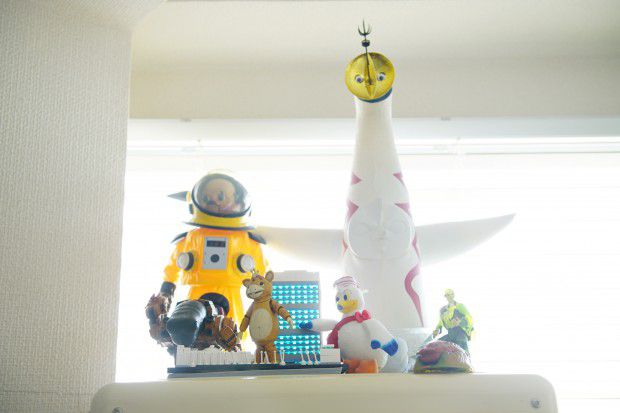
——その経験が後の監督業に大きく影響していくのですね。
—That experience came to profoundly influence your production career later on?
樋口「見て覚えたつもりはないんですけど。その頃、自分と同世代の人たちが『実は拙者も怪獣愛好者でござる』といった感じで徐々に怪獣愛をカミングアウトして集っていく流れがあり、僕も『大阪でウルトラマンの自主映画を作っている人がいるらしい』という話を聞いて上映会に行ったんです。『帰ってきたウルトラマン マットアロー1号発信命令』(1983年)という作品だったのですが、その監督とウルトラマン役をやっていたのが庵野秀明さんでした。凄く面白かったので共通の知人に紹介してもらったのですが、その知人が僕のことを『ゴジラのプロのスタッフ』と紹介したんです。プロとは言えないが現場にはいるし、まあ間違いではないよなと否定しなかったら、庵野さんの目の色が変わって、『実はいま、大阪で新しい怪獣映画の自主映画を作っている。現場を見に来てくれないか?』と誘われたんです。ちょうど現場も途切れていた時だったのでノリで行ってしまったんですよ。庵野さんと二人で夜行電車に乗って大阪までね。現場に行ってみたら、自主映画を作っているとはいえ学生ばかりでやはり勝手がわかってはいない。現場で得た知識で『こうしたほうがいいよ』と自分なりにアドバイスしていたら、向こうはゴジラのプロが来ていると思っているから全部言う通りにするんです。今まで怪獣好きで馬鹿にされていた鬱屈の人生だったのに、そこではみんなが頼りにしてくるからすっかり気分が良くなっちゃって(笑)。仕事でもない自主制作映画のために、なにもかも捨てて大阪に行ってしまいました。ゴジラのバイト代が尽きるまで映画を作って、無くなってもまた映画を作ってーー続けているうちに今に至った感じです」
Higuchi: “I didn’t mean I learned all by just seeing. Around that time, people my age and I tended to gather to call out our love for monsters, saying, “I am actually a monster lover as well.” I heard that there was somebody in Osaka making an independent film on Ultra Man, and went to a screening. The film was called The Return of Ultra Man MATARROW-1 XL (1983), and the producer and actor of Ultra Man was Hideaki Anno. Since it was very interesting, I had a mutual friend introduce him to me, but the friend introduced me as “Godzilla’s pro staff”. I couldn’t say I was a pro, but I was on the set so I didn’t deny it, but then Anno’s expression changed and asked me, “I’m currently making a new independent monster film in Osaka. Will you come see the set?” It exactly when I had a break from the other sets, so I went with the flow. I took a night train with Anno all the way to Osaka. When I got to the movie set, despite that he was making an independent film, it was full of students so I could say and do anything. I advised them simply from my prior knowledge on set, but since they thought a pro from Godzilla came everyone did exactly as I told them. Until now I had lead a depressing life being mocked about liking monster films, but there, everyone trusted my opinions so I got put into a really good mood, haha. I threw away everything to go to Osaka for an independent film that wasn’t even my job. I made films until the money I earned from working at Godzilla was gone, and still continued to make films even after it was gone – I continued to do so, and here I am today.”
——そのお二人が、32年後に実際に『シン・ゴジラ』のメガホンをとることになるのは凄いですね。『シン・ゴジラ』では、プロット段階で庵野監督が辞退しかけたそうですが、それを引き止められた時のお気持ちというのは?
—It’s amazing how 32 years later, the two of you came to direct Godzilla Resurgence together. During Godzilla Resurgence, I heard director Anno almost backed out at the plotting stage, but how did you feel when you stopped him from leaving?
樋口「どうしてもゴジラがやりたいという気持ちというよりは、庵野さんのプロットを読んで、いま怪獣映画をやらないとたぶん一生やらないなと思ったからです。書きかけていたそのプロットが面白くて、それまでのゴジラとは全く違ったんですよね。従来のゴジラは『あのゴジラがまた来ました』という、初代ゴジラから始まる時間の流れに則ってるんです。でも庵野が書いた案は、ゴジラというものが存在しないところから始めていたし、ゴジラを知らない世界の人たちが目の当たりにしたらどうなるのかという点をリアリティを持って徹底的に追求していた。そういうところが面白かったから最後まで書いてほしかったんです。単純に勿体ないと感じたし、その脚本で作った映画を観てみたかった」
Higuchi: “It’s not that I felt I desperately wanted to do Godzilla, but after reading Anno’s plot, I thought that we would never do a monster film if we didn’t do one now. The plot in progress was interesting, and was completely different from Godzilla until then. Conventional Godzilla was like, “The Godzilla has returned”, and the time axis of these series all begin from the original Godzilla. However, the plan that Anno wrote began from a place where Godzilla did not exist, and brought up the point of how people from a world that has never seen Godzilla would react if they saw it. He did this with elements of reality and thoroughly pursued it. Things like so were very interesting, so I wanted him to finish writing until the end. I simply felt it would be a waste to throw it all away, and I wanted to watch a movie which was created from that script.”
——それまでのゴジラシリーズから独立した世界だからこそ、『シン・ゴジラ』では怪獣ではなく”巨大不明生物”として登場するのですね。
—Especially since in Godzilla Resurgence, the world is independent from the prior Godzilla series, not a monster, but a ‘giant unknown creature’ appears.
樋口「そうです。実際にああいうものが現れたとしたら、どのように名称をつけるのかを政府機関に問い合わせ、調査して名付けたのです。また『シン・ゴジラ』のモーションキャプチャーを狂言師の野村萬斎さんにお願いしたのは、神がかった存在としての動きを求めたからです。通常は『ジュラシック・パーク』やアメリカ版のゴジラなどのCGで用いられている、地球上の生物の解剖学的解釈で動きをつけるのですが、人々が想像する生物の動きから独立した動きが欲しかった。そして僕の中ではもうひとつ理由があって、高校時代にアメリカ映画派の人たちから『日本の特撮は伝統芸能のようだ。同じことを繰り返し続けて方法論を守っているから進化がない』と揶揄されていたので、そう言っていた連中の言葉をあえて借りて伝統芸能を突きつけたかった、ということがあります。もちろんそれだけじゃないですけど(笑)」
Higuchi: “Exactly. We asked governmental agencies how they would name it if something like that were to appear in reality, conducted research, and named it. In addition, the reason why we asked master of Kyogen, Mansai Nomura to do the motion capture for Godzilla Resurgence is because we wanted movement of a godly presence. Usually, you would use technology used in the CG of Jurassic Park and American Godzilla and create movement from creatures on Earth from an anatomical interpretation, but we wanted movement independent from the movement of creatures that people would imagine. There was another reason for me. When I was in high school, I was ridiculed by those who preferred American films that “Japanese special effects are like traditional arts. Since the same thing is repeated, there is a protected methodology and there is no progress.” I wanted to take those people’s words and break off from traditional arts,of cause it’s not the only reson.”
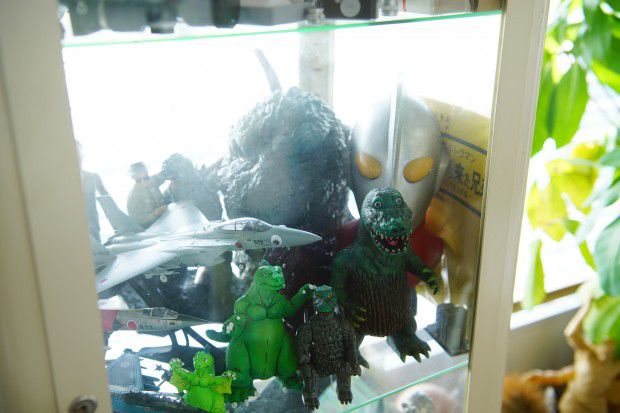
——とても良い話(笑)。怪獣映画はじめその頃から好きだったものの輝きは、昔と変わらずにありますか? それとも、当時から少しずつ変化していますか?
—What a great story. As for monster films, is the brilliance of it that you liked then still the same? Or, has it gradually changed from then?
樋口「変わらないと思います。それは僕らの世代がすごく良いものを享受していた世代だったからかもしれない。質も量も豊かでした。上の世代も作品数は多くなかったし、下の世代では特に1975年から1985年の間は怪獣映画も一切作られていないんです。享受できた世代だからこそ当時好きだったものの輝きは色あせることはないし、信じ続けることができる。好きになったがためにかなりひどい目にもあってるとは思いますけれど(笑)、恩返しを続けないと、という気持ちで作っています。100パーセント好きで楽しいことを仕事にしている自分は恵まれていると思うので、そのぶん、昔自分が映画を観て感じたように、観た人が『こういうものを作ってみたいな』と思えるものを作らなくてはという使命感はあります」
Higuchi: “I don’t think it’s changed. That’s possibly because my generation enjoyed very good things. The quality and quantity was there. The generation before me did not have many films, and the generation after me, especially from 1975-1985, there was not a single monster film created. Since our generation was able to enjoy, the brilliance of the things I liked will never fade, and it allows me to continue to believe in it. Though I have experienced some awful moments from liking it too. I make films with the feeling that I must give back. I am lucky and grateful to be able to make something I love 100 percent my job, so I have a responsibility to create things that will make people think, “I want to make something like this too”, just as I felt when I watched movies.”
——最後に、これから挑戦したいことはありますか?
—Lastly, are there any things you would like to challenge yourself to?
樋口「先輩たちのように新たな表現を創り出していきたいとは常に思っています。ただそのためには、無謀さという要素がエネルギーとして必要なのです。昔のウルトラマンなどの撮影現場の写真を見るとスタッフがすごく若くて、だからこそ創成期を築き上げることができたと思うんですよ。だから今の自分では違う作り方になってしまうかもしれないですね。
この間、初めて脱出ゲーム(一つの会場に集まった参加者達が協力し、様々なヒントを元に謎を解いてその場所から脱出するゲーム)に行ってみたのですが、普段映画館では見ないような若い参加者がほとんどでしたし、受け身で観る映画では与えられないフィジカルならではの感覚が共有できて、これを考えた人はすごいなと感動しました。僕はたまたま先輩たちが築き上げてきた映画というフォーマットにしがみついているし、そこでやり続けるけれど、今の若い世代が新しい表現を創るために向かうところは、そういう風にフォーマット自体もこれまでになかったもののような気がします」
Higuchi: “Like my mentors, I constantly feel that I would like to create new ways of expression. Yet to do so, the element of recklessness is needed as energy. When I see the old movie sets of Ultra Man, the staff are very young and so I think it helped to build up the creation period. Therefore, maybe I will have a different methodology today. Recently, I went to an escape game (a game in which the participants in a single venue work together to use various hints to solve a mystery and escape from that place) for the first time, and there were mostly young participants that you wouldn’t normally see at the movie theaters. I was moved that I got to share a sensation only felt from physical interaction that I would not receive when watching movies, which is a passive experience, and thought the person who thought of it was a genius. I am coincidentally attached to the format of films that my mentors have built up, and I will continue to stay there, but I feel that the place that today’s young generation heads for to create new ways of expression comes from a format that has not been found yet.”
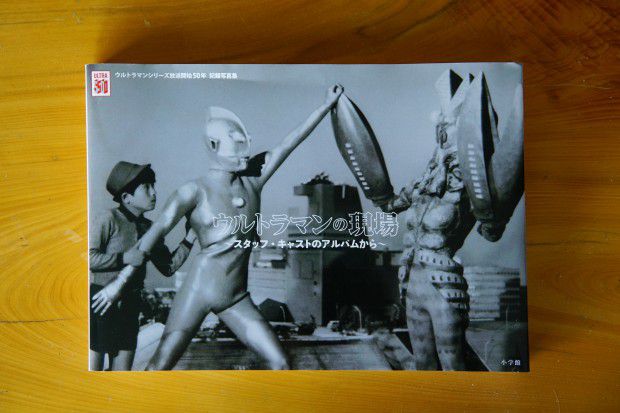
photography Satomi Yamauchi
text Shiki Sugawara and Ryoko Kuwahara
樋口真嗣(ひぐち しんじ)
1965年生まれ、東京都出身。平成ガメラシリーズでは特技監督を務め、日本アカデミー賞特別賞を受賞。監督作品に『ローレライ』、『日本沈没』、『のぼうの城』、実写版『進撃の巨人』など。2016年公開の『シン・ゴジラ』では監督と特技監督を務めた。また、自身初のアニメ総監督作品として、航空自衛隊が管理するドラゴンと新人搭乗員たちの姿を描くアクションファンタジー『ひそねとまそたん』が4月12日よりTOKYO MX、BSフジほかにて放送中、Blu-ray&DVD発売決定。詳しくはこちら(http://hisomaso.com/)
Shinji Higuchi
Born 1965 in Tokyo. Special effects director the Gamera Trilogy, and received the Japan Academy Film Prize Special Award. Other productions include Lorelei, Japan Sinks, The Floating Castle, and live-action film Attack on Titan. In Godzilla Resurgence (2016), he was the director and special effects director. And the very first work of him to take part of executive director of animation”Hisone and Masotan”which is action fantasy about a dragon of Japan Air Self-Defense Force is on air now and just announced release of Blu-ray&DVD.(Official web site http://hisomaso.com/)
